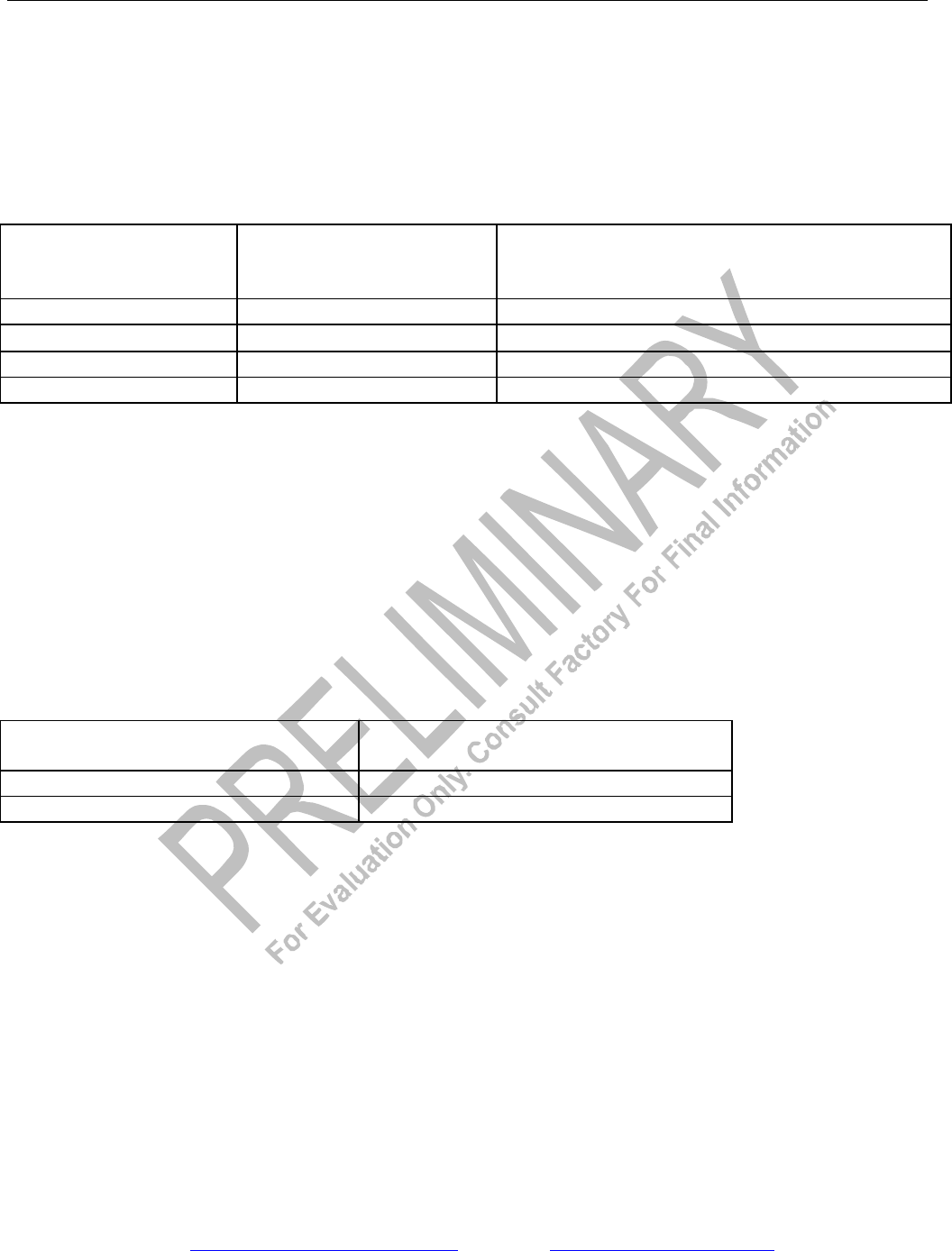
Product Preview DS21Q55
73 of 248 012103
Please contact telecom.support@dalsemi.com or search http://www.maxim-ic.com for updated
information.
13.1 Line Code Violation Count Register (LCVCR)
T1 Operation
T1 code violations are defined as bipolar violations (BPVs) or excessive zeros. If the B8ZS mode is set
for the receive side, then B8ZS code words are not counted. This counter is always enabled; it is not
disabled during receive loss of synchronization (RLOS = 1) conditions (Table 15-1).
T1 LINE CODE VIOLATION COUNTING OPTIONS Table 15-1
COUNT EXCESSIVE
ZEROS?
(ERCNT.0)
B8ZS ENABLED?
(T1RCR2.5)
WHAT IS COUNTED IN THE LCVCRs
No No BPVs
Yes No BPVs + 16 Consecutive Zeros
No Yes BPVs (B8ZS Code Words Not Counted)
Yes Yes BPVs + 8 Consecutive Zeros
E1 Operation
Either bipolar violations or code violations can be counted. Bipolar violations are defined as consecutive
marks of the same polarity. In this mode, if the HDB3 mode is set for the receive side, then HDB3 code
words are not counted as BPVs. If ERCNT.3 is set, then the LVC counts code violations as defined in
ITU O.161. Code violations are defined as consecutive bipolar violations of the same polarity. In most
applications, the framer should be programmed to count BPVs when receiving AMI code and to count
CVs when receiving HDB3 code. This counter increments at all times and is not disabled by loss of sync
conditions. The counter saturates at 65,535 and will not rollover. The bit error rate on an E1 line would
have to be greater than 10** -2 before the VCR would saturate (Table 15-2).
E1 LINE CODE VIOLATION COUNTING OPTIONS Table 15-2
E1 CODE VIOLATION SELECT
(ERCNT.3)
WHAT IS COUNTED IN THE
LCVCRs
0 BPVs
1 CVs
